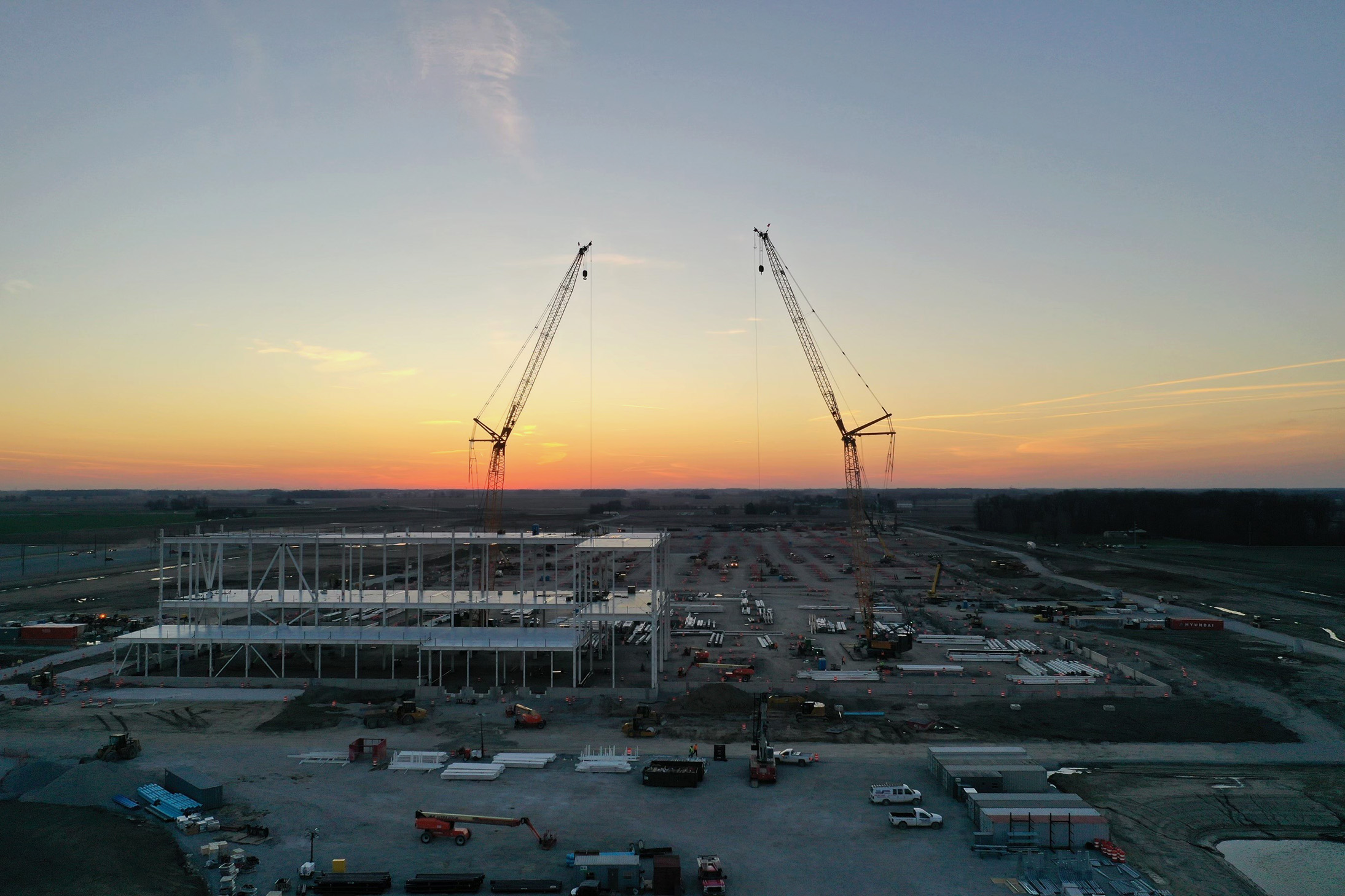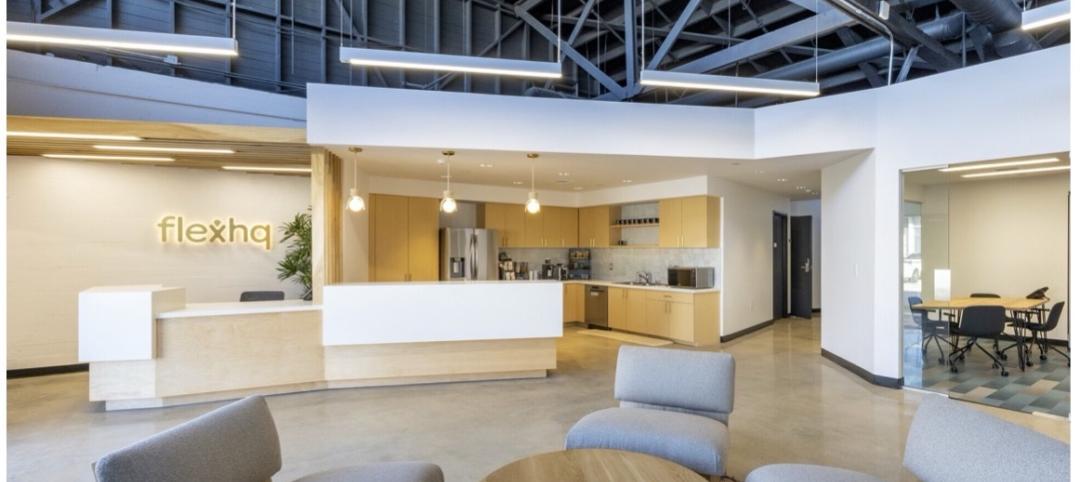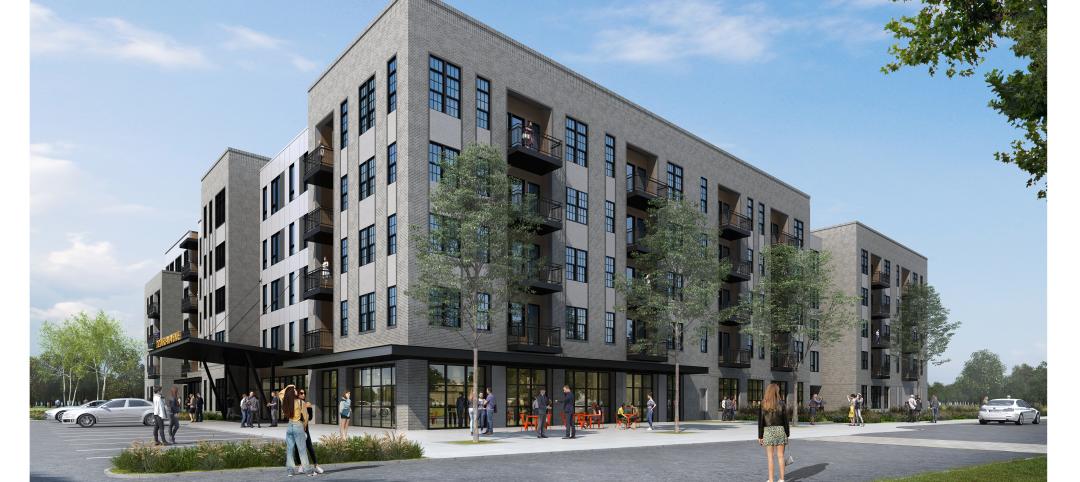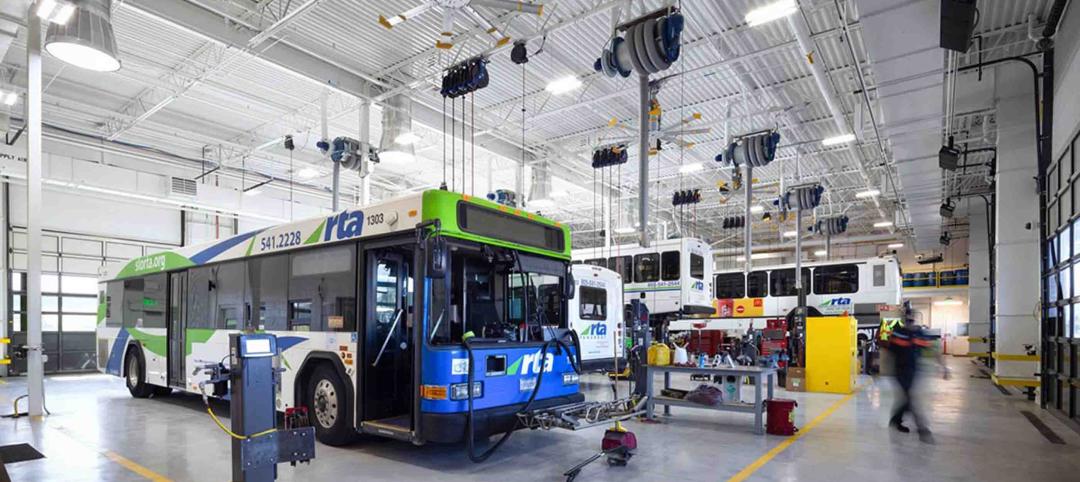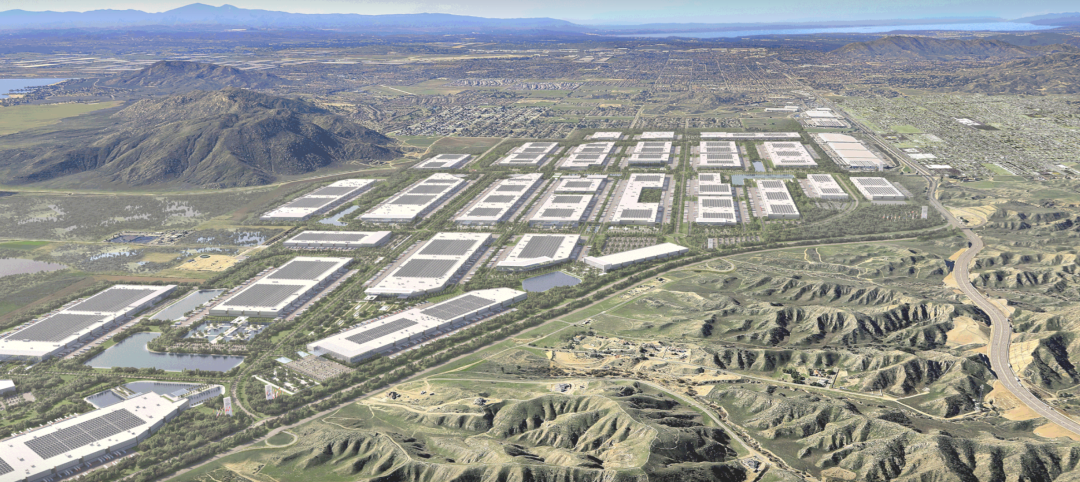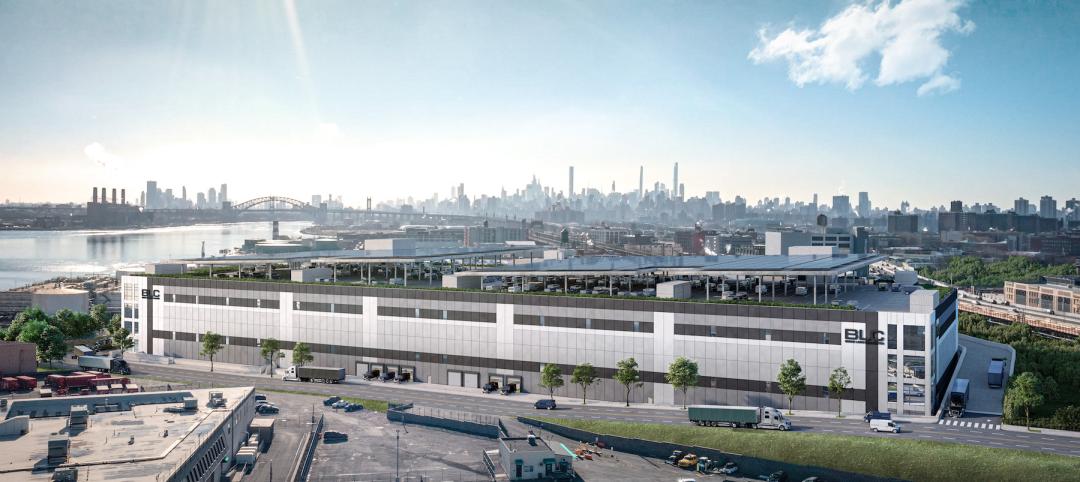As global automakers rush to manufacture batteries to meet the rising demand for electric vehicles, one architecture/engineering firm has been leading the change for over a decade.
Albert Kahn Associates have long been experts in the design of industrial manufacturing spaces. Albert himself referred to them as his “beautiful factories.” When a new industry emerged, the firm rose to the challenge of figuring out how a built environment could support a very complex manufacturing process. Kahn was the architect and engineer for one of the earliest battery manufacturing plants in the United States, Nissan’s Smyrna, Tennessee plant in 2012.
From an architectural standpoint, building codes have yet to catch up with the unique requirements of the battery manufacturing process. But where building codes fall short, there is more test data from independent sources. This data, in some cases, goes above and beyond code because of the special hazards that exist. We can make more informed choices based on the actual risks that exist. More than a decade ago, there was more uncertainty about what could happen inside a plant. People have learned from experience what is and what isn’t a problem. We have also seen the chemical makeup of the battery and the manufacturing processes change radically over time.
Today's battery manufacturing plants
One of the most significant changes seen in today’s battery plant is the full manufacturing process—from raw materials to the fully operational battery. Early battery plants imported the anode and cathode components which were typically manufactured in Asia. Now, plants are being designed with multiple level Mixing Buildings that use gravity-fed production processes to transform raw materials at the top of a building down through various phases to produce cathode and anode pastes at the bottom. For the Kahn team, this reminds us of Henry Ford’s Highland Park automobile factory designed in 1909, which featured a gravity-based assembly line to produce over one million Model Ts annually.
Hundreds of acres, millions of square feet, all designed and constructed at incredible speed.
It’s no surprise that automotive production schedules demand quick construction. Teams use the design-build delivery model, which proves even more challenging given the ever-developing technology and process for battery production. Owners, contractors, and design partners need to go into the project understanding that change will happen. The important thing for any owner is to choose agile partners that know how to collaborate when the stakes are high.
Most of today’s battery expertise comes from Asia. Large companies like LG, Panasonic, and Samsung partner with auto manufacturers to construct battery manufacturing facilities. Working with international teams requires cultural intelligence and patience to overcome language barriers and differences in building codes and workforce norms.
We have found in-person work sessions to be the most effective. Technology is helpful, but there is no substitute for working in person. For weeks at a time, members from the owner’s team joined the construction team in Kahn’s offices. Getting to know colleagues over shared meals and bridging cultural differences. Most beneficial was reviewing physical building materials together in real-time. Assessing materials together in the same room transcended the nuances of translation and allowed for a deeper understanding and quicker decision-making. Construction partners are also in the office and part of regular discussions. When the design and engineering team proposes a solution, the construction team can quickly advise on more expedient and cost-effective ways to achieve the desired result.
Every automotive manufacturer is pushing to produce batteries to support the move to vehicle electrification. As a result, there is an incredible amount of competition. Suppliers for HVAC, electrical, and other equipment are experiencing lead times over one year, meaning that equipment needs to be pre-purchased well before the design work gets off the ground.
An engineering feat
Battery plants require a unique environment inside their manufacturing areas. The Mixing Buildings, for instance, require no more than 3% relative humidity while the balance of the manufacturing space is at 1%. These dry rooms require mechanical systems with desiccant dehumidification equipment to extract moisture from the air, but these are energy-intensive HVAC systems that consume significant electrical power. To put it into perspective, these battery plants require approximately three times the cooling capacity of a regular manufacturing facility of the same square footage.
Similarly, from an electrical engineering standpoint, battery plants are two to three times the electric load of a typical automotive assembly plant. Engineers need to understand the actual energy requirements for the building and the process, because you cannot ask utility companies for more megawatts than you plan to use, or you will be faced with a hefty penalty.
Safety is imperative
Keeping employees safe is one of the biggest concerns for the team throughout the design and engineering process. Battery plants can be enormous facilities, with some areas housing hazardous materials. Exit passageways or rated corridors throughout the building are one way to reduce the distance employees need to travel to get to a safe location in the event of an emergency. It is down to the expertise of the team to find a location for these corridors that does not interrupt the manufacturing process. 3D fire simulations during the design process help determine how to keep workers safe so they can exit in an emergency.
A battery manufacturing campus may also include test facilities, where manufactured products undergo rigorous testing, including purposeful battery destruction, to validate quality and safety. This building needs to incorporate even more safety features like pressure relief walls so that in the event of a successful destruction or explosion of a battery, the walls contain the event without damaging other parts of the building.
Our understanding of batteries and the battery manufacturing plant continues to grow. Albert Kahn Associates is excited about the future of alternative energy and more developments to reuse and recycle automotive batteries, which need to continue alongside the construction of new manufacturing plants.
Peter G. Lynde, PE, is a Principal and Senior Vice President at Albert Kahn Associates, Inc. He can be reached at Peter.Lynde@akahn.com. Shelli Jaeger, AIA, NCARB, LEED AP, is a Senior Architect at Albert Kahn Associates, Inc.
Related Stories
Industrial Facilities | May 31, 2023
Nascent cowarehousing firm steps forward with facilities that offer a communal user experience
The design firm Ware Malcomb has partnered with FlexHQ, a Los Angeles-based firm offering cowarehouse leasing solutions, to create a scalable workspace that emphasizes leasing flexibility and higher-quality and environmentally friendlier amenities than aren’t commonly found in this building type, say representatives from both companies.
Multifamily Housing | May 12, 2023
An industrial ‘eyesore’ is getting new life as an apartment complex
The project, in Metuchen, N.J., includes significant improvements to a nearby wildlife preserve.
Industrial Facilities | Apr 10, 2023
Implementing human-centric design in operations and maintenance facilities
Stantec's Ryan Odell suggests using the human experience to advance OMSF design that puts a focus on wellness and efficiency.
Warehouses | Mar 29, 2023
Construction completed on Canada’s first multi-story distribution center
Construction was recently completed on Canada’s first major multi-story industrial project, a distribution center in Burnaby, British Columbia. The project provides infrastructure for last-mile delivery in a world where consumers have come to expect next-day and same-day delivery, according to Ware Malcomb, the project's architect of record.
Industrial Facilities | Mar 6, 2023
The largest planned logistics and business park in North America gets under way in Southern California
The $25 billion World Logistics Center will boost the supply chain capabilities of Southern California and will serve as a distribution center for destinations across the continent.
Intelligent Lighting | Feb 13, 2023
Exploring intelligent lighting usage in healthcare, commercial facilities
SSR's Todd Herrmann, PE, LEEP AP, explains intelligent lighting's potential use cases in healthcare facilities and more.
Giants 400 | Feb 9, 2023
New Giants 400 download: Get the complete at-a-glance 2022 Giants 400 rankings in Excel
See how your architecture, engineering, or construction firm stacks up against the nation's AEC Giants. For more than 45 years, the editors of Building Design+Construction have surveyed the largest AEC firms in the U.S./Canada to create the annual Giants 400 report. This year, a record 519 firms participated in the Giants 400 report. The final report includes 137 rankings across 25 building sectors and specialty categories.
Giants 400 | Feb 6, 2023
2022 Telecommunications Facility Sector Giants: Top architecture, engineering, and construction firms in the U.S. telecommunications facility sector
AECOM, Alfa Tech, Kraus-Anderson, and Stantec head BD+C's rankings of the nation's largest telecommunications facility sector architecture, engineering, and construction firms, as reported in the 2022 Giants 400 Report.
Industrial Facilities | Dec 21, 2022
New York City’s largest industrial building is nearing completion
The multistory facility is arriving at a time when space remains at a premium.
Adaptive Reuse | Dec 21, 2022
University of Pittsburgh reinvents century-old Model-T building as a life sciences research facility
After opening earlier this year, The Assembly recently achieved LEED Gold certification, aligning with the school’s and community’s larger sustainability efforts.


